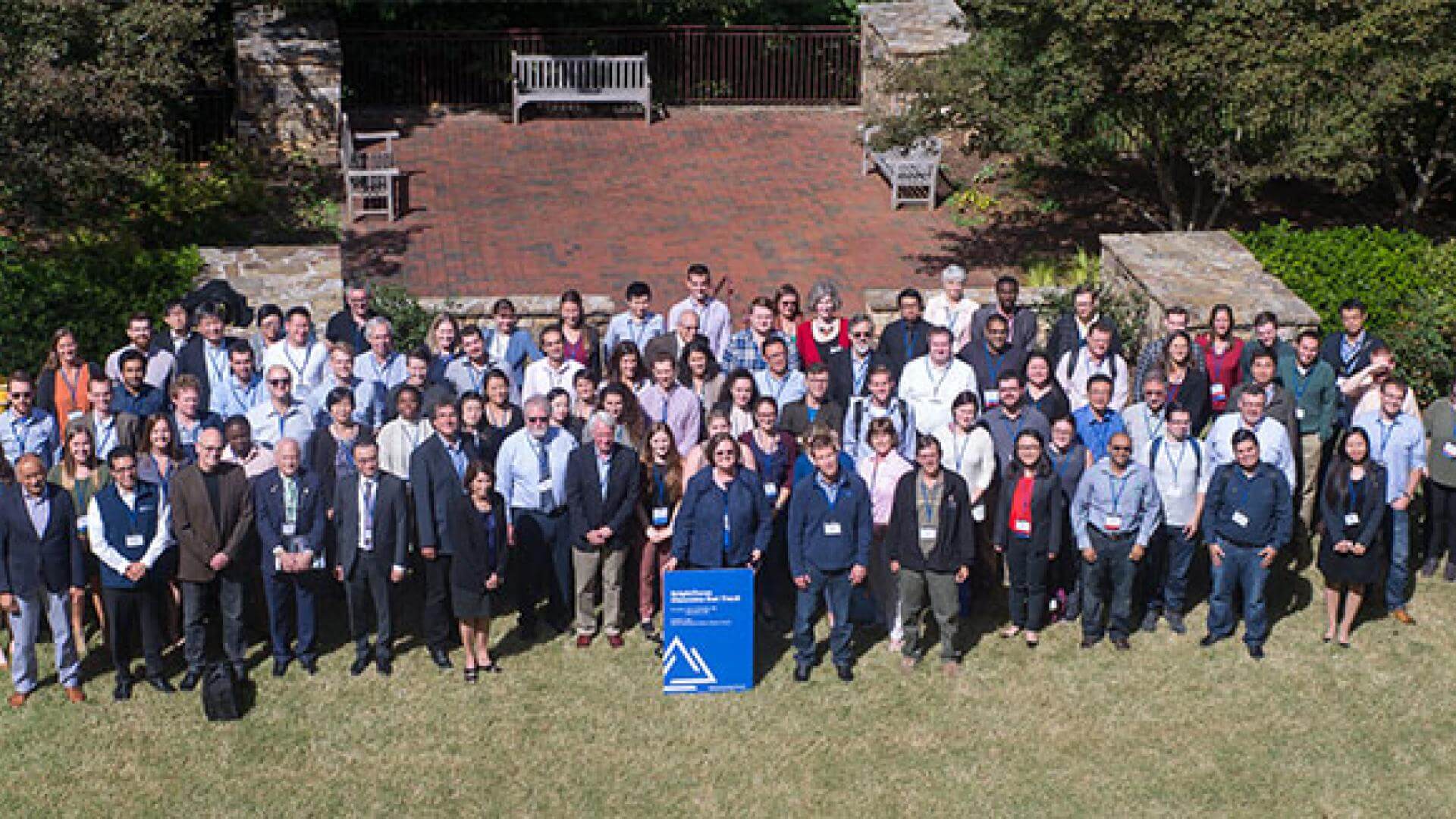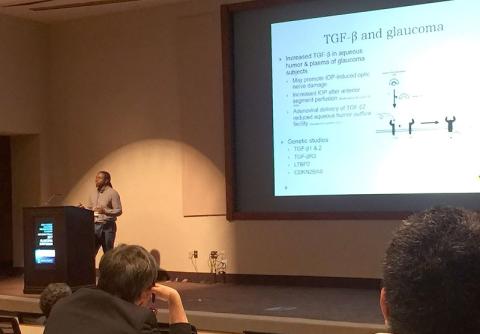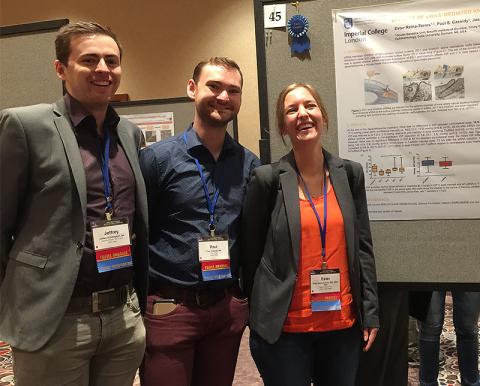Glaucoma Fast Track: Investing in the Future
Written By: BrightFocus Editorial Staff



Written By: BrightFocus Editorial Staff

BrightFocus Foundation recently held its first-ever Glaucoma Fast TrackSM to accelerate the fight for a cure by investing in promising young scientists in the field of vision research.
“The Glaucoma Fast Track is an immersive learning opportunity specifically created for scientists who are starting or contemplating a career in glaucoma research,” said the event’s organizer Diane Bovenkamp, PhD, BrightFocus’ Vice President for Scientific Affairs.
Bovenkamp said that the workshop was modeled on the success of BrightFocus’ Alzheimer’s Fast Track.
BrightFocus’ National Glaucoma Research program currently is supporting over 34 scientific projects worldwide, a nearly $6 million investment to end a disease that affects 3 million Americans, a number expected to double by mid-century.
The day-long Glaucoma Fast Track featured world-renowned glaucoma experts who are known for their research and/or clinical expertise, as well as their mentoring skills. Together, they reviewed the latest discoveries and research directions, and inspired new thinking and interdisciplinary approaches in the search for cures.
Here are links to more details about the workshop.

Ralph Hazlewood, PhD, one of the 100-plus attendees at the workshop, is a postdoc researcher in the lab of Rachel Kuchtey, MD, PhD, a glaucoma clinician and researcher at Vanderbilt University and former co-principal investigator on an NGR grant. Under Dr. Kutchtey’s direction, Hazlewood is investigating a possible role for angiotensin receptor blockers, a blood pressure medication, in regulating intraocular pressure (IOP) in glaucoma.
Despite having been involved in glaucoma research since graduate school, Hazlewood finds that it’s still easy to get lost at the big scientific meetings.
“Among the sheer amount of talks, it is sometimes difficult to get a grasp of the all the relevant research in one’s respective field, and even more difficult securing time to meet one-on-one with some of the more prominent investigators,” he said.
In contrast, and to address this common difficulty that happens at scientific conferences, workshop speakers made a point of summarizing the important research in the field, and “not only those works that complement their own research, but the studies that will drive innovation for glaucoma therapies and motivate early career investigators in new promising areas of research,” Hazlewood said. He cited discoveries in ocular biomechanics, extracellular matrix remodeling and transforming growth factor (TGF)-beta regulation as “hot topics” that inspired him.
Julia Oswald, PhD, another attendee, works in the lab of BrightFocus grantee Petr Baranov, PhD, at Harvard. The lab is focused on both glaucoma and macular degeneration; while Baranov uses a 2016-18 Macular Degeneration Research grant from BrightFocus to investigate neuroprotective factors in the retina, Oswald is experimenting with retinal ganglion cell (RGC) transplantation to restore sight lost to glaucoma.
“I think that especially for students and young investigators, the Glaucoma Fast Track day is a great concept,” Oswald said. “Most valuable to me was the detailed overview of available animal models and their distinct characteristics with respect to setup, handling, IOP elevation, RGC damage and death, etc., which helped me to gain a better understanding of what pitfalls to avoid when selecting and later on evaluating a specific model.”

Similar thoughts were expressed by Wei Zhu, a pharmacy graduate student from China’s Qingdao University, and by Ester Reina-Torres, PhD, who’s based at Imperial College, London, and attended Glaucoma Fast Track with a BrightFocus Travel Award.
“I loved this symposium! I really appreciated the chance to communicate with people and I learned a lot of new things,” said Zhu, emphasizing how important it is “for me, and people from another culture” to be able to network in this way. One of her goals for the future is to improve collaboration between Chinese and U.S. researchers.
Reina-Torres is investigating how micro-RNA signaling affects the tissue of the trabecular meshwork to control outflow capacity and ultimately IOP, a project funded through a 2017-19 NGR grant to her mentor, Darryl Overby, PhD. She thanked BrightFocus for her travel grant, adding: “I found the Fast Track very interesting, especially for an overview of aspects of glaucoma that are not directly related to my research, such as optic nerve degeneration and clinical studies.”
Even for mid-level researchers, such as cell biologist Emmanuel Buys, PhD, the Glaucoma Fast Track can be extremely useful, particularly if they are transitioning in their careers. For years Buys has focused on a nitrous oxide cell signaling pathway shared in a variety of disease models, including glaucoma. Whereas he previously ran his own lab at Harvard’s Mass General, now he works for the Cambridge, Mass.-based Ironwood Pharmaceuticals.
“In my current job, I aim to identify new indications for drugs Ironwood has in the pipeline,” he said. “The program today had great speakers all around, and provided a great overview of the glaucoma landscape and provided a unique opportunity to network,” he said.
Having the Glaucoma Fast Track workshop precede the ISER-BrightFocus 2017 Glaucoma Symposium: Basic Science Catalyzing Treatments for Glaucoma made it all the more useful for making connections. Attendees at the workshop were able to continue their dialogue over several days.
For example, Ralph Hazlewood described how, following his platform talk at the symposium, several experts in the field came up to him and said that those conversations “yielded new interesting research ideas that I plan to pursue in the coming months.”
In terms of accelerating his own research agenda, “the BrightFocus Glaucoma Fast Track definitely lived up to its name and purpose,” Hazlewood concluded.
BrightFocus Foundation is a premier global nonprofit funder of research to defeat Alzheimer’s, macular degeneration, and glaucoma. Through its flagship research programs — Alzheimer’s Disease Research, Macular Degeneration Research, and National Glaucoma Research— the Foundation has awarded nearly $300 million in groundbreaking research funding over the past 51 years and shares the latest research findings, expert information, and resources to empower the millions impacted by these devastating diseases. Learn more at brightfocus.org.
Disclaimer: The information provided here is a public service of BrightFocus Foundation and is not intended to constitute medical advice. Please consult your physician for personalized medical, dietary, and/or exercise advice. Any medications or supplements should only be taken under medical supervision. BrightFocus Foundation does not endorse any medical products or therapies.
